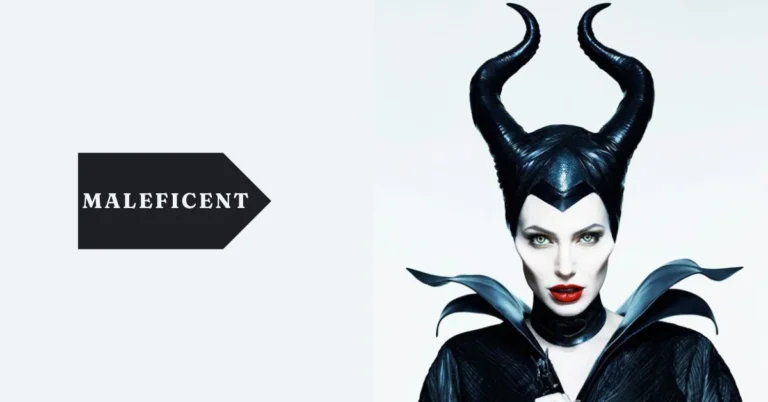Introduction to Maleficent
Maleficent—a name that sends shivers down the spine yet intrigues the imagination. This iconic character has been a part of fairy tale lore for generations, captivating audiences with her dark allure and powerful presence. But there’s more to Maleficent than just wicked spells and sinister plots. In recent years, she has evolved into a complex figure whose story challenges our understanding of good and evil.
From her classic role as the villain in Disney’s “Sleeping Beauty” to her own standalone films, Maleficent invites us to explore themes of betrayal, love, and redemption. So why is this enigmatic character resonating so deeply in pop culture today? Let’s dive into the history of Maleficent and uncover what makes her stand out from traditional portrayals of villains.
The History of the Character
Maleficent first emerged in Disney’s 1959 animated classic, “Sleeping Beauty.” She was originally crafted as the quintessential villain. With her striking horns and dark garments, she quickly became an iconic figure.
This character was inspired by Charles Perrault’s fairy tale, which depicted her as a wicked fairy seeking revenge. Her malevolence was palpable; she cast a curse on Princess Aurora at her christening. This act of treachery solidified her role as one of Disney’s most memorable antagonists.
Over time, Maleficent transitioned from merely being evil to representing deep-seated emotions like betrayal and heartache. The release of the live-action film in 2014 reshaped our understanding of this character. It offered insight into her past and motivations, challenging viewers’ perceptions about good and evil.
Through different adaptations, Maleficent has evolved significantly while maintaining that initial aura of darkness that captivates audiences even today.
Traditional Depictions of Villains in Media
Villains in media often fit a predictable mold. They are usually characterized by dark attire, sinister laughter, and an insatiable thirst for power. These archetypes give audiences a clear-cut enemy to root against.
From the wicked stepmother to the malevolent sorcerer, traditional depictions lean heavily on external traits. A scarred visage or exaggerated features signal danger and deceit. Their motives often revolve around revenge or greed, making them one-dimensional antagonists.
These portrayals create captivating narratives but lack depth. Viewers may cheer for the heroes without considering what shapes these villains into who they are. This leads to simplistic storytelling that fails to explore complex human emotions like love or betrayal.
As stories evolve, so too does our understanding of villainy. Audiences increasingly crave characters with richer backstories that explain their actions and choices beyond mere evil intentions.
Breaking the Mold: Maleficent’s Redemption Arc
Maleficent’s character transcends the typical villain narrative through her remarkable redemption arc. Initially portrayed as a ruthless figure, she evolves into a multifaceted being driven by complex emotions.
Her transformation begins when she suffers betrayal. This pivotal moment ignites a deep sense of loss and anger, which fuels her early actions. However, what sets Maleficent apart is how this pain shapes her journey rather than solely defining it.
As the story unfolds, we witness her gradual shift from vengeance to compassion. The love for young Aurora awakens something within Maleficent—a longing for connection that softens her hardened exterior.
This unexpected bond challenges preconceived notions of good and evil. It reveals that even those who have strayed can find their way back to light through understanding and love. Her journey proves that redemption is possible for anyone willing to confront their past mistakes.
The Impact of Maleficent on Pop Culture and Society
Maleficent has transcended her role as a traditional villain to become a cultural icon. With the release of Disney’s live-action adaptation, she gained new layers that resonated with audiences worldwide.
Her character challenged stereotypes about evil, showcasing the complexities of motherhood and betrayal. This shift encouraged viewers to rethink what defines a villain.
Merchandising also surged, with Maleficent-themed products becoming must-haves for fans. From costumes to collectibles, her image is everywhere.
Social media buzzed as fans embraced her fierce persona and complex motivations. Memes and fan art flooded platforms like Instagram and Twitter, further solidifying her place in modern pop culture.
In literature and film discussions, Maleficent sparked conversations about female representation in storytelling. She stands as an example of how villains can evolve into multifaceted characters deserving empathy rather than scorn.
Lessons Learned from Maleficent’s Character Development
Maleficent’s journey reveals profound lessons about forgiveness and transformation. Initially portrayed as a vengeful figure, her character evolves to show that pain can fuel growth rather than destruction.
Her story teaches us that even the darkest experiences don’t define our future. By embracing vulnerability, Maleficent showcases the power of empathy and understanding. In doing so, she challenges conventional notions of good versus evil.
Moreover, her relationship with Aurora highlights the importance of connection. Love can emerge in unexpected forms and heal deep wounds. This bond transforms Maleficent from antagonist to protector.
Through her struggles, we learn that redemption is possible for anyone willing to confront their past. Her evolution encourages us all to look beyond appearances and seek deeper truths within ourselves and others.
Conclusion: Why Maleficent is More Than Just a Villain
Maleficent represents a significant shift in the portrayal of villains within popular culture. She is not merely an evil figure; rather, she embodies complexity and depth. Her story challenges conventional narratives about good and evil.
Through her character, audiences are invited to explore themes like betrayal, love, and redemption. This multifaceted approach has resonated with viewers around the world. It encourages them to reconsider their own perceptions of villainy.
Moreover, Maleficent’s journey showcases how one can overcome past pain and emerge stronger. The character serves as a reminder that everyone has a backstory worthy of understanding. As such, Maleficent transcends her role as just another antagonist.
Her lasting impact on pop culture continues to inspire countless adaptations and discussions regarding villainous figures in media today. By breaking free from traditional molds, Maleficent paves the way for more complex characters in storytelling across various platforms.
It’s clear that Maleficent is much more than just a villain; she is an iconic representation of resilience and transformation that resonates deeply with fans everywhere.
FAQs
Q: Why is Maleficent considered an empowering figure?
Ans: Maleficent represents autonomy and resilience, breaking free from traditional villain stereotypes to embody strength and independence.
Q: How did the 2014 film redefine Maleficent’s character?
Ans: The live-action Maleficent portrayed her as a misunderstood, multidimensional character, focusing on her compassion and personal struggles.
Q: What sets Maleficent apart from other Disney villains?
Ans: Unlike many villains, Maleficent operates independently, refusing to be subservient or conform to typical antagonist roles.
Q: What is the main theme of Maleficent: Mistress of Evil?
Ans: The film emphasizes themes of self-discovery, reconciliation, and the power of embracing one’s individuality.
Q: Why wouldn’t Maleficent ever be a lackey?
Ans: Maleficent’s fierce independence, strong will, and commanding presence make her unsuitable for subservient roles.

